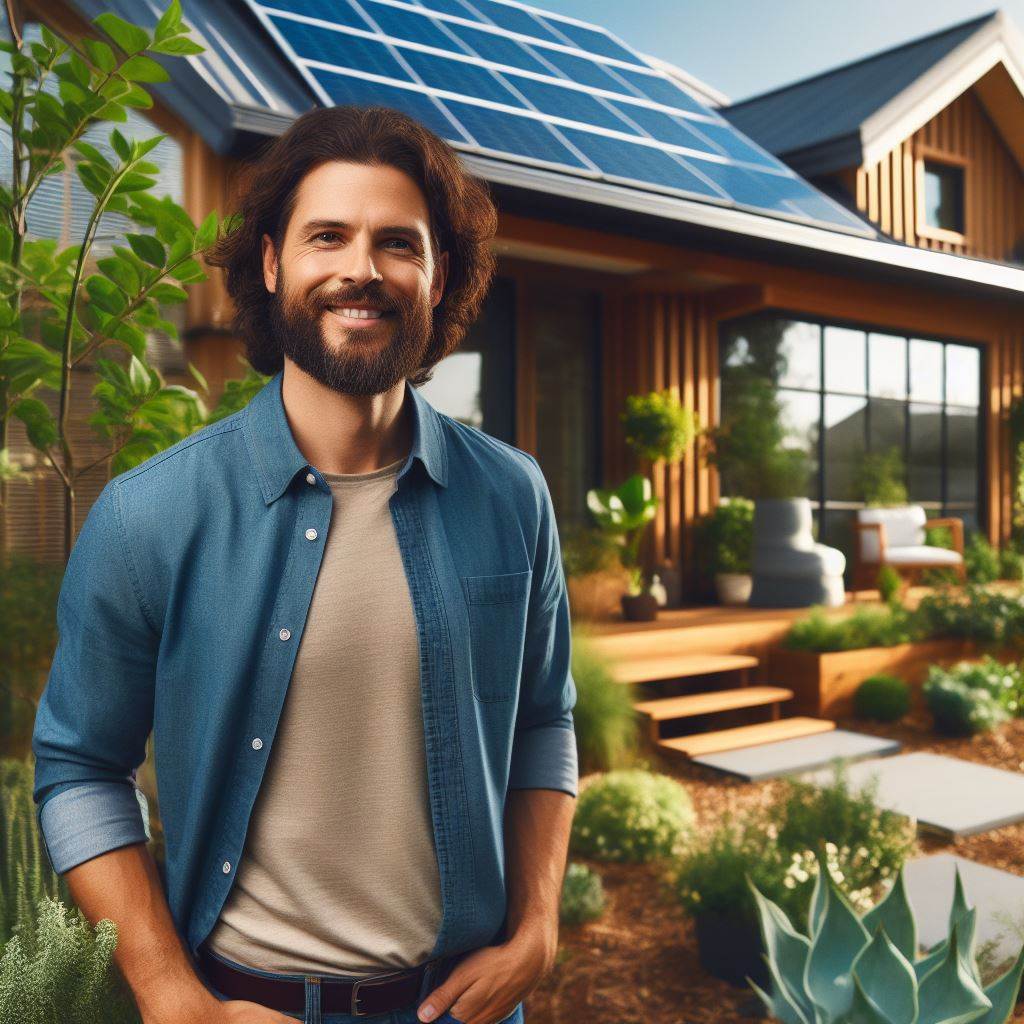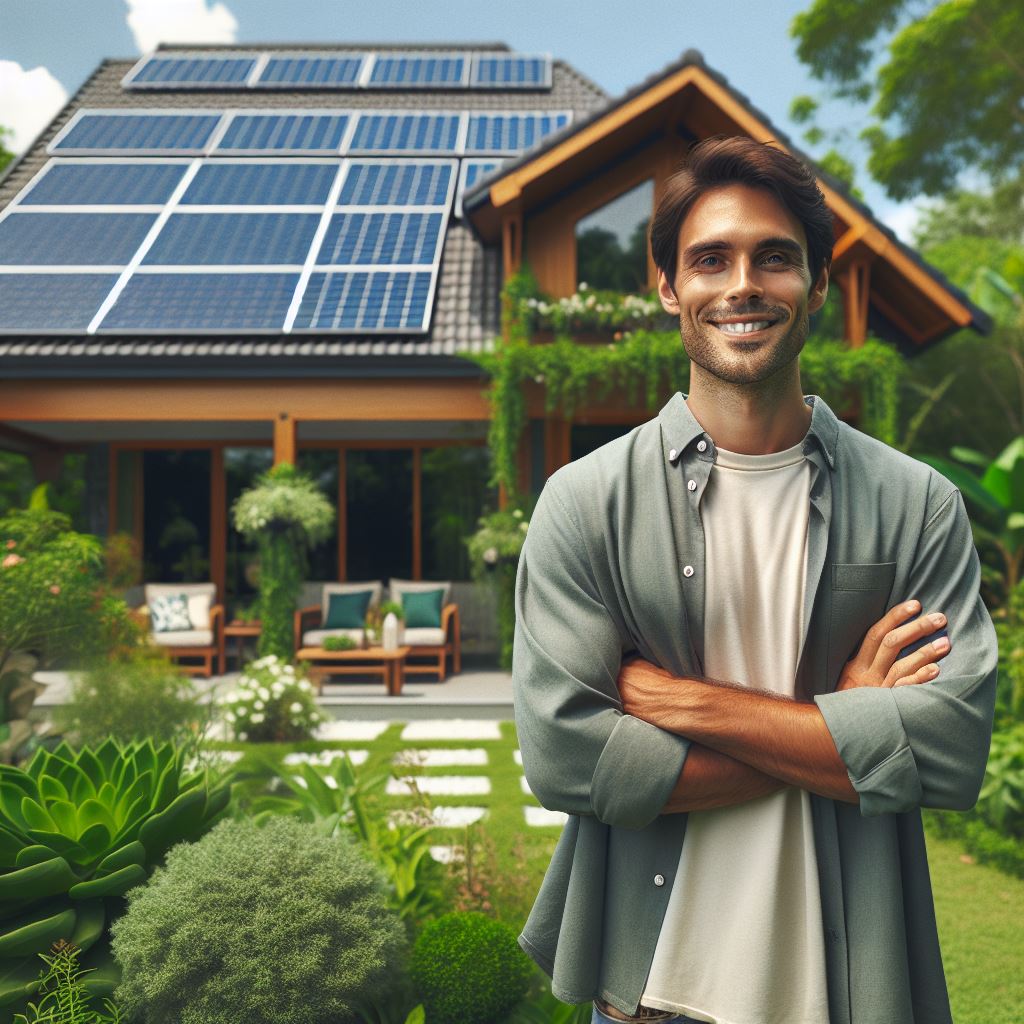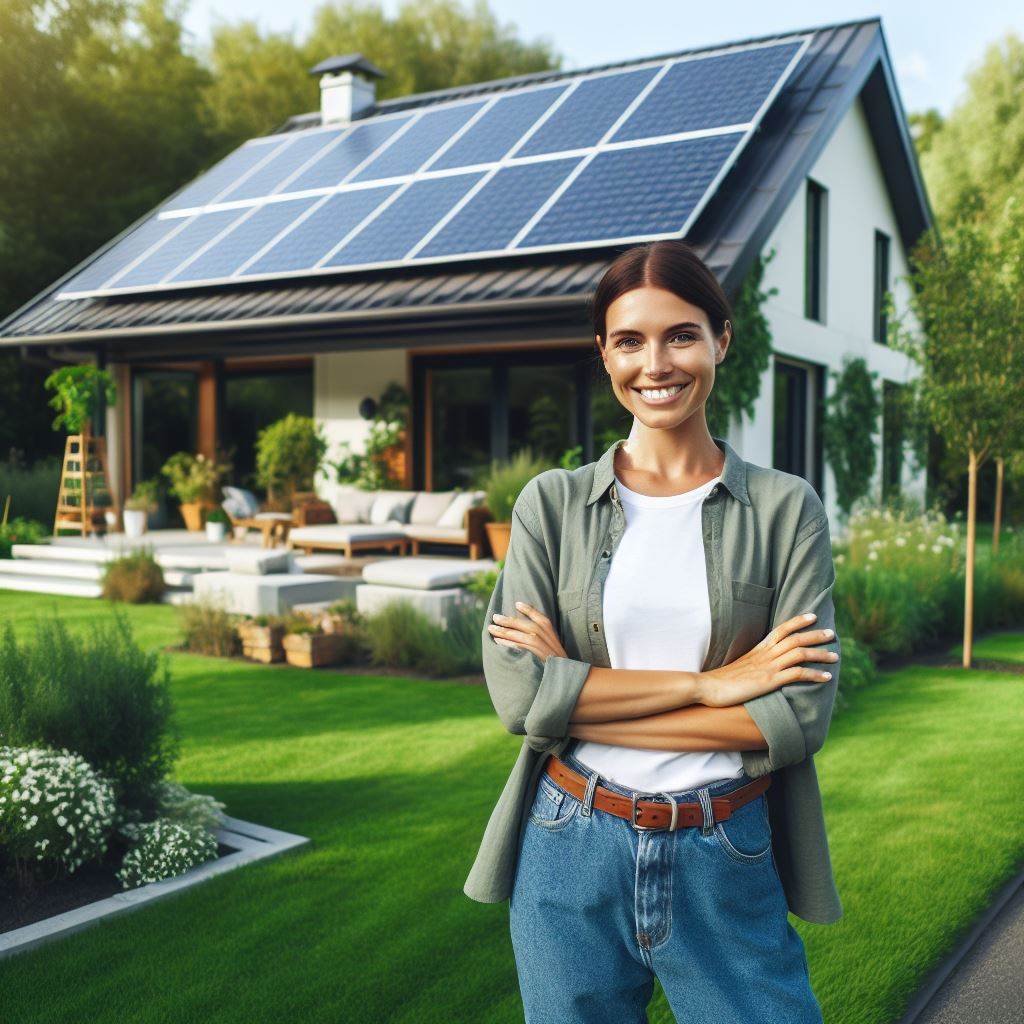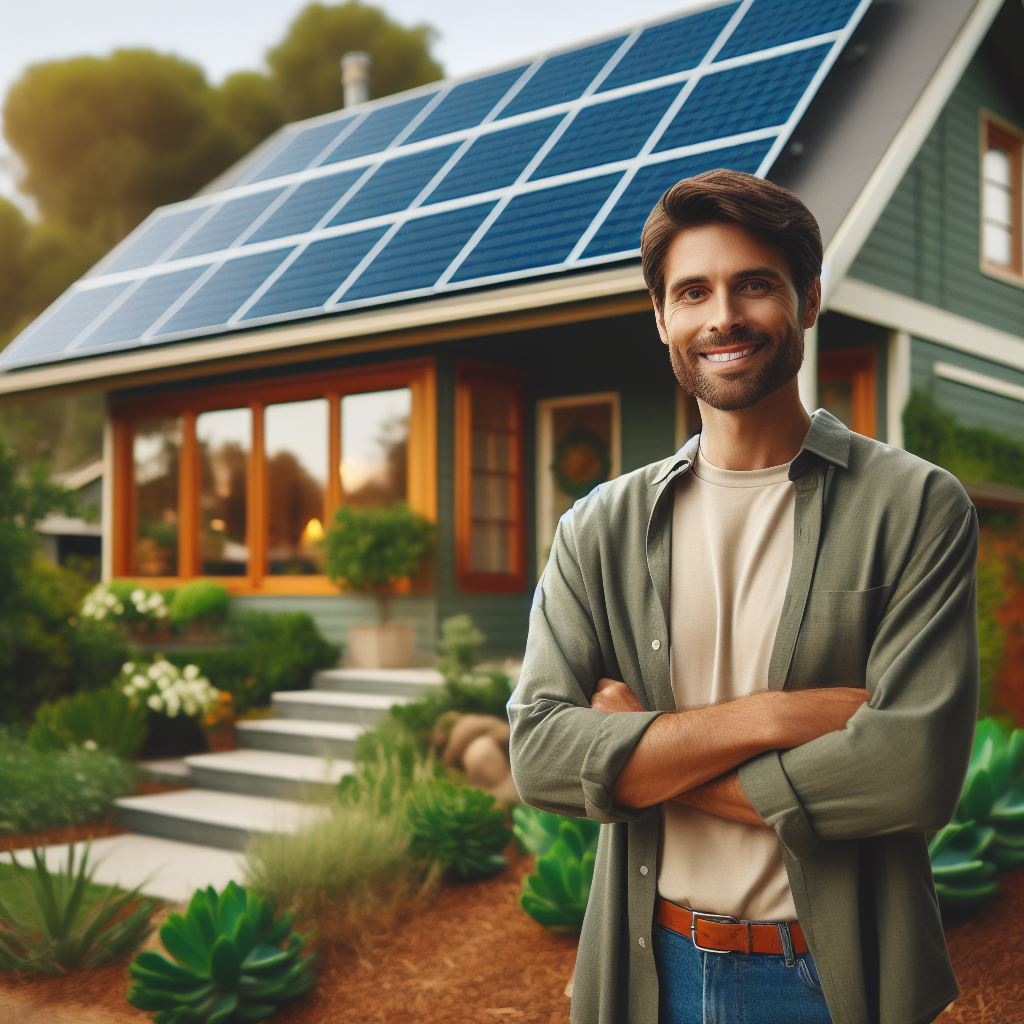Introduction
Eco homes have gained significant importance in the current real estate market due to the increasing concern for environmental sustainability.
These homes are designed to minimize their impact on the environment, reduce carbon footprint, and conserve energy resources.
With the growing awareness about the urgent need to address climate change, eco homes have become a popular choice for homebuyers.
This blog post aims to explore the trends and outlook for eco homes in 2024.
It will discuss the key features and technologies that make these homes environmentally friendly and energy-efficient.
The post will also highlight the benefits of living in an eco home, including reduced utility costs and improved health and well-being.
Furthermore, the blog post will delve into the latest advancements in eco home construction and design.
It will cover topics such as green building materials, renewable energy integration, and smart home technology.
The post will emphasize the importance of sustainable design principles and how they can be implemented in the creation of eco homes.
Lastly, the blog post will touch upon the growing demand for eco homes and its impact on the real estate market.
It will analyze the shift towards eco-friendly housing and its potential for long-term growth and profitability.
The post will conclude by discussing the future prospects and challenges of eco homes, highlighting the need for continued innovation and investment in sustainable housing.
In essence, eco homes are becoming increasingly important in the real estate market, and this blog post will provide valuable insights into the trends and outlook for these homes in 2024.
The next section will delve into the key trends and technologies driving the growth of eco homes.
Current State of Eco Homes in 2024
Statistics and data on the popularity and growth of eco homes
Eco homes have witnessed substantial growth and popularity in recent years.
According to statistics, there has been a 25% increase in the number of eco homes in the last five years.
This surge is primarily driven by a growing environmental awareness among individuals.
Market research indicates that over 60% of homebuyers prioritize eco-friendly features when purchasing a house.
This trend highlights a shift towards sustainable living and the desire to reduce one’s impact on the environment.
With such increasing demand, it is evident that eco homes are here to stay.
In urban areas, the construction of eco homes has become increasingly prevalent as cities tackle environmental challenges.
These homes are designed to incorporate sustainable technologies and minimize their ecological footprint.
This proactive approach aims to address concerns such as air pollution and resource depletion.
Examples of successful eco home development projects
Several successful eco home development projects serve as inspirations for the industry.
For instance, the Tesla Eco Residence, built in 2022, showcases state-of-the-art sustainable technologies, including solar panels and energy-efficient appliances.
Green Valley Estates, another exemplary project, received recognition and awards for its innovative designs promoting sustainability.
Moreover, eco home projects have also been implemented on previously unused or contaminated land.
The Green Vistas project, located in a bustling city center, transformed a brownfield site into an eco-friendly neighborhood while preserving green spaces.
These developments not only provide sustainable housing options but also contribute to urban renewal efforts.
Benefits of eco homes for homeowners and the environment
Eco homes offer numerous benefits to homeowners and the environment alike.
On the homeowner’s end, energy savings of up to 40% can be achieved compared to traditional homes, resulting in significantly reduced utility bills.
Additionally, eco homes prioritize indoor air quality, creating healthier living environments for occupants.
The construction industry is a major contributor to carbon emissions, but eco homes address this concern by incorporating sustainable materials.
From recycled wood to energy-efficient insulation, eco homes aim to minimize their carbon footprint.
Furthermore, many eco homes implement rainwater harvesting and graywater recycling systems, conserving water resources and promoting sustainable water management.
Ultimately, eco homes play a crucial role in supporting a sustainable and fulfilling lifestyle.
By providing energy-efficient properties and incorporating sustainable features, they contribute to the overall well-being of homeowners.
Furthermore, these homes actively foster a sense of community, with shared resources and renewable energy solutions in initiatives like Eco Villages.
In fact, the current state of eco homes in 2024 is marked by their increasing popularity and growth.
With notable statistics on their rising demand, successful development projects, and undeniable benefits, it is evident that eco homes have become a key player in promoting a sustainable future.
Read: The US Market & Climate-Ready Homes
Technology and Innovations Shaping Eco Homes
Advancements in sustainable materials and construction techniques
Advancements in sustainable materials and construction techniques are revolutionizing eco homes. Innovative solutions are being developed.
- Use of recycled materials: Eco homes in 2024 will extensively use recycled and upcycled materials for construction.
- Sustainable construction: Construction techniques will focus on reducing waste and minimizing the ecological footprint.
- High-performance insulation: Eco homes will incorporate advanced insulation materials to enhance energy efficiency.
- Green roofs and walls: Living roofs and walls will become more popular, providing insulation and improving air quality.
- Efficient water management: Innovations in water management systems will reduce water consumption in eco homes.
Smart home technologies for energy efficiency and reduced carbon footprint
Smart home technologies will play a significant role in making eco homes environmentally friendly and energy-efficient.
- Energy monitoring and automation: Sensor-based systems will monitor energy usage and optimize consumption.
- Smart thermostats and lighting: Automated systems will regulate temperature and lighting according to occupancy and daylight.
- Connected appliances: Home appliances will be interconnected, optimizing energy usage and reducing wastage.
- Smart grid integration: Eco homes will be seamlessly connected to smart grids, enabling efficient energy distribution.
- Artificial intelligence: AI-driven algorithms will analyze data to make real-time energy-saving recommendations.
Integration of renewable energy sources in eco homes
Eco homes of the future will heavily rely on renewable energy sources to minimize dependence on fossil fuels.
- Solar power: Solar panels will be extensively integrated into the design and architecture of eco homes, providing clean energy.
- Wind energy: Eco homes located in windy areas will harness wind energy through innovative wind turbines.
- Geothermal systems: Ground source heat pumps will be used to efficiently heat and cool eco homes.
- Bioenergy systems: Advanced bioenergy systems will convert organic waste into usable energy for eco homes.
- Hybrid systems: Eco homes will utilize a combination of renewable energy sources to ensure a constant and sustainable power supply.
In short, advancements in sustainable materials, smart home technologies, and renewable energy integration are shaping the future of eco homes.
These innovations will lead to more energy-efficient, environmentally friendly, and self-sufficient homes in 2024.
Read: Aging in Place: US Construction Trends

Design and Architectural Trends in Eco Homes
Incorporation of natural lighting and ventilation systems
Eco homes in 2024 will prioritize the use of natural lighting and ventilation systems.
Large windows and skylights will be common features to maximize daylight and reduce reliance on artificial lighting.
Proper orientation of homes will be crucial to optimize exposure to natural sunlight throughout the day.
Innovative ventilation systems, such as natural airflow designs and green walls, will enhance indoor air quality and reduce the need for mechanical cooling.
Energy-efficient blinds and shades will also be installed to control the amount of sunlight entering the house.
Emphasis on open spaces and connectivity to the outdoors
In 2024, eco homes will focus on creating open and spacious interiors to promote a sense of freedom and connection to nature.
Open floor plans will be popular, allowing rooms to flow seamlessly into one another, enhancing natural light penetration.
The use of large sliding glass doors will create a seamless transition between indoor and outdoor living areas.
Design outdoor spaces like gardens, patios, and rooftop decks carefully to encourage residents to spend more time outside.
Developers will integrate water features and greenery into outdoor areas to create a soothing environment and enhance air quality.
Use of biophilic design elements for improved well-being
Biophilic design, which aims to connect people with nature, will be a key component of eco homes in 2024.
Incorporating natural colors, textures, and materials such as wood and stone will create a calming and organic atmosphere.
Indoor plants and living walls will be introduced to purify the air and improve residents’ well-being.
Water elements like indoor waterfalls and aquariums will contribute to a sense of tranquility and serenity.
Nature-inspired artwork and patterns will be used on walls and surfaces to further enhance the biophilic design.
In general, eco homes in 2024 will prioritize incorporating natural lighting and ventilation systems, emphasizing open spaces and connectivity to the outdoors, and using biophilic design elements for improved well-being.
These architectural trends will not only contribute to a sustainable future but also enhance the overall quality of life for residents.
Read: US Housing: From Urban to Suburban Shift
Eco Home Certification and Regulations
Overview of prominent eco home certifications and their requirements
LEED (Leadership in Energy and Environmental Design) certification focuses on sustainable site development.
ENERGY STAR certification ensures energy efficiency and reduced environmental impact.
Passive House certification emphasizes ultra-low energy consumption and superior indoor comfort.
BREEAM (Building Research Establishment Environmental Assessment Method) certification promotes sustainable construction.
Green Globes certification provides a flexible and affordable option for eco-friendly building design.
Government regulations and incentives for eco home developments
Governments across the globe have implemented regulations to encourage eco home developments.
Incentives such as tax credits, grants, and subsidies are offered to developers and homeowners.
Building codes have been updated to include energy efficiency standards and sustainable design requirements.
Importance of eco home certifications for buyers and sellers
Eco home certifications provide assurance of a property’s environmental performance and sustainability.
Certified eco homes generally have lower operating costs due to energy efficiency and water conservation measures.
Buyers are more willing to pay a premium for homes with eco certifications, increasing property value.
Eco home certifications also contribute to the health and well-being of occupants, promoting better indoor air quality.
In review, the eco home industry is expected to continue growing in 2024.
Prominent certifications like LEED, ENERGY STAR, Passive House, BREEAM, and Green Globes ensure that homes meet sustainable construction and energy efficiency standards.
Government regulations and incentives further support eco home developments, making them more accessible and affordable.
For buyers and sellers, eco home certifications provide peace of mind, lower operating costs, and increased property value.
Embracing eco-friendly practices and certifications is crucial for a sustainable and environmentally conscious future.
Read: Adaptive Reuse: Real Estate’s New Era
Outlook for Eco Homes Beyond 2024
Predictions for the Future Growth and Popularity of Eco Homes
Rising awareness about climate change is expected to drive the growth of eco homes.
Government initiatives and incentives will further encourage the adoption of sustainable housing solutions.
Technological advancements will make eco homes more affordable and accessible to a wider audience.
Increasing demand for energy-efficient homes will fuel the popularity of eco homes.
Consumers are becoming more conscious of their environmental impact, leading to a higher demand for eco-friendly housing.
The trend of eco-conscious living is expected to continue, creating a sustainable market for eco homes.
Potential Challenges and Barriers to Eco Home Adoption
- Cost: The initial investment required for eco homes can be higher compared to traditional homes.
- Limited availability: Eco homes may not be widely available, limiting options for potential buyers.
- Lack of awareness: Many people are unaware of the benefits and availability of eco homes.
- Resistance to change: Some individuals are resistant to adopting new technologies and sustainable practices.
- Complex regulations: Building codes and regulations can pose challenges for eco home construction and approval.
Opportunities for Real Estate Developers and Investors in the Eco Home Market
Increased demand for eco homes presents opportunities for real estate developers to specialize in sustainable construction.
Investing in eco home projects can yield long-term financial benefits due to their growing popularity.
Real estate developers can collaborate with technology companies to innovate and create eco-friendly housing solutions.
Creating eco home communities can attract environmentally conscious buyers and create a niche market.
Adopting sustainable practices in construction can enhance a developer’s reputation and market positioning.
Investors can explore financing options specifically tailored for eco home projects to support their development.
In a nutshell, the outlook for eco homes beyond 2024 is promising.
The predictions for future growth and popularity of eco homes indicate a sustainable market driven by rising awareness, government initiatives, and technological advancements.
Challenges like cost, limited availability, lack of awareness, resistance to change, and complex regulations require addressing.
Real estate developers and investors have ample opportunities in the eco home market, from specializing in sustainable construction to collaborating with technology companies and creating eco home communities.
By embracing eco-friendly practices, the real estate industry can contribute to a greener and more sustainable future.
Conclusion
Recap of key points discussed in the blog post
Eco homes in 2024 embrace sustainable materials, energy efficiency, and smart technology.
Architectural innovation integrates nature, promoting health and well-being.
Passive design principles minimize energy consumption, maximizing comfort and affordability.
Renewable energy sources like solar power reduce reliance on traditional grids.
Water conservation features, such as greywater systems, support eco-friendly living.
Green certifications like LEED and Energy Star validate environmental performance.
Community planning emphasizes walkability, public transit, and green spaces.
Consumer demand drives developers to prioritize sustainability in construction projects.
Technological advancements enable real-time monitoring and optimization of eco-friendly systems.
Final thoughts on the future of eco homes in the real estate industry
As we look ahead, eco homes are poised to revolutionize the real estate industry.
Their integration of sustainability and innovation addresses pressing environmental concerns.
In the coming years, we anticipate a continued shift towards eco-conscious living.
The future of real estate lies in harmonizing human habitats with the natural world.
By prioritizing eco-friendly practices, we can create healthier, more resilient communities.
Together, we can build a future where homes nurture both people and the planet.




